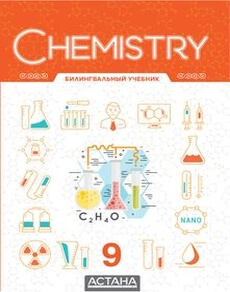Chemistry Билингвальный Baikenov K. - 9 класс - ХИМИЯ

| Предмет: | Химия |
| Класс: | 9 класс - ХИМИЯ |
| Авторы: | Baikenov K., Khassen T., Zhumagulov N., Kaliyev D., Yussupov O., Samatov A., Sel A., Tor A. |
| Год: | 2017 |
| Язык: | Русский |
| полную версию можно, после Авторизации или Регистрации | |
На платформе i-book.kz представлены электронные учебники для учеников для девятого класса по предмету "Химия", выпущенные издательством в 2017 году. Оптимизируйте вес рюкзака вашего ребенка, избавившись от лишних книг и тетрадей! Электронные учебники, разработанные Baikenov K., Khassen T., Zhumagulov N., Kaliyev D., Yussupov O., Samatov A., Sel A., Tor A., доступны онлайн на любом устройстве и позволяют вносить пометки прямо в тексте, не беспокоясь о сохранности страниц. Выбрав i-book.kz, вы также экономите деньги, так как больше не нужно приобретать дорогостоящие печатные учебники. Наш ресурс поможет разгрузить портфель вашего ребенка и уменьшить расходы на образование. Просто найдите нужный учебник или напишите нам, и мы добавим его на сайт. Выбирайте учебники на i-book.kz и сделайте учебный процесс для своего ребенка более легким и удовлетворительным. Подарите ему возможность учиться с удовольствием и легкостью вместе с нами!
Contents
Preface
Chapter 1. Electrolytic dissosiation
1. Electrolytes and nonelectrolytes
2. Dissociation of acids, bases and salts
3. The degree of dissociation. Strong and weak
electrolytes
4. Ionic double displacement reactions
5. Chemical properties of acids, bases and salts
6. Hydrolysis of salts
Chapter 2. Qualitative analysis of inorganic compounds
1. Qualitative reactions for cations
2. Qualitative reactions for anions
3. Qualitative analysis of unknown salt solution
4. Chemical calculations on limitimg reagent problems
Chapter 3. Qualitative analysis of inorganic compounds
1. Qualitative reactions for cations
2. Temperature and concentration effects
3. Pressure effects. Catalysts and inhibitors
Chapter 4. Chemical equilibrium
1. Chemical equilibrium
2. Factors affecting equilibrium
Chapter 5. Oxidation-reduction reactions
1. Oxidation states. Oxidation and reduction processes
2. Oxidation-reduction reactions
3. Balancing redox reactions
Chapter 6. Metals and metal alloys
1. General properties of metals
2. Metal alloys
3. Production of metals
4. Solving exercises with impurities
Chapter 7. 1,2,13 group elements and their compounds
1. Alkali metals and their compounds
2. Alkaline earth metals and their compounds
3. Aluminum and its compounds
4. Solving experimental problems related to metals
Chapter 8. 16,17 group elements, their compounds
1. Halogens
2. Hydrochloric acid
3. Sulfur
4. Compounds of sulfur
5. Sulfuric acid and sulfates
6. Solving problems: Percent yield
Chapter 9. Elements and compounds of 14 and 15 groups
1. Nitrogen
2. Ammonia
3. Nitric acid
4. Specific properties of nitric acid and nitrates
5. Phosphorus and its compounds
6. Fertilizers
7. Silicon and its compounds
8. Silicates. Silicate industry
Chapter 10. Macro- and micro elements in human body and
environment
1. The chemical composition of the human body
2. Important nutrition in your food
3. Heavy metals
Chapter 11. Introduction to Organic Chemistry
1. Introduction to organic chemistry. Classification of
organic compounds
2. Homologous series of organic compounds
3. Isomerism
4. Chemical calculation: Determinig formulas
Chapter 12. Hydrocarbons. Fuels
1. Alkanes
2. Alkenes
3. Alkynes
4. Aromatic hydrocarbons
5. Hydrocarbon fuels. Oil industry
Chapter 13. Oxygen and Nitrogen containing organic
compounds
1. Alcohols
2. Carboxylic acids
3. Esters and fats
4. Aminoacids. Proteins
5. Soap and synthetic detergents
6. Carbohydrates
Answers
Solubility table
Periodic Table
Glossary
References